Unlocking the Potential of Your Nikon D600: Exploring the Best Lenses for Every Occasion
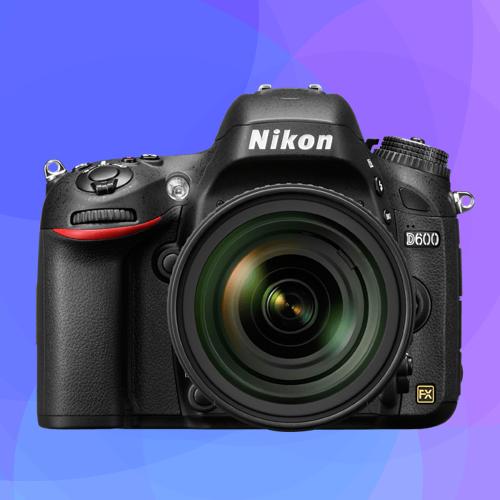
Take advantage of the Nikon D600’s full-frame sensor with a great lens. The camera uses the F-mount, which has a huge selection of lenses to choose from.
Whether you’re into portraiture, macro, wildlife, or simply want an all-rounder, we’ve got you covered with our carefully curated list. Featuring prime and zoom lenses, as well as third-party options like the Sigma 35mm f/1.4 DG HSM Art and the Tamron SP 90mm F/2.8 Di MACRO 1:1 VC USD, there’s something for everyone.
The Nikon F-Mount: FX vs DX Lenses
The Nikon D600 features the Nikon F-Mount, a lens mount system that has been the cornerstone of Nikon’s SLR and DSLR cameras for over six decades. While the F-Mount has remained consistent, the lenses and camera sensors that it supports have evolved significantly.
The Nikon D600 is a full-frame DSLR, meaning it sports a 35mm full-frame sensor that provides a larger surface area for capturing light compared to smaller sensors found in APS-C format cameras. When choosing lenses for a full-frame camera like the D600, it’s important to consider whether the lens is an FX or DX lens.
FX lenses are designed to cover the larger image circle of a full-frame sensor, providing a wider field of view and better image quality, particularly in low light conditions.
DX lenses, on the other hand, are designed for APS-C cameras and have a smaller image circle. While you can use a DX lens on an FX camera like the D600, the camera will automatically crop the image to match the smaller image circle of the DX lens, resulting in a smaller effective field of view and a lower resolution image.
Decoding Nikon Lens Acronyms
Nikon lenses come with a variety of acronyms in their names, which can be confusing for both beginners and experienced photographers. Understanding these acronyms can help you make a more informed decision when selecting a lens for your Nikon D600.
- AF-S: Auto Focus with Silent Wave Motor. This means that the lens has a built-in motor for faster and quieter autofocus.
- NIKKOR: Nikon’s brand name for their lenses.
- ED: Extra-low Dispersion. These lenses have special glass elements that reduce chromatic aberrations, resulting in sharper images with better color accuracy.
- VR: Vibration Reduction. These lenses have built-in optical stabilization to reduce camera shake, which is especially useful for low-light or telephoto shooting.
- G: These lenses do not have an aperture ring, and the aperture must be controlled through the camera.
- E: Electronic aperture control, which provides more accurate and consistent exposure control, especially during burst shooting.
Focal Lengths for Different Photography Styles
The focal length of a lens is a key factor in determining the type of photography it is best suited for. Here’s a quick breakdown of what focal lengths are generally good for different types of photography:
- Ultra-Wide (14-24mm): These lenses are great for landscapes, architecture, and interior photography. They capture a very wide field of view, which is ideal for sweeping vistas or large buildings.
- Wide (24-35mm): Versatile for a range of photography styles, including landscapes, street photography, and group portraits. They provide a wide field of view without the extreme distortion of ultra-wide lenses.
- Standard (35-70mm): These lenses are often used for general-purpose photography, including portraits, street photography, and everyday scenes. They provide a field of view similar to the human eye, which makes for natural-looking images.
- Telephoto (70-200mm): Excellent for portraiture, sports, wildlife, and events. They allow you to get close to the subject without physically moving closer, and they can provide a shallow depth of field for isolating subjects.
- Super Telephoto (200mm+): Best suited for wildlife, sports, and astrophotography. They provide extreme magnification, allowing you to capture distant subjects in great detail.
Affiliate Links
Outside the Shot is a participant in the Amazon Services LLC Associates Program, an affiliate advertising program designed to provide a means for sites to earn advertising fees by advertising and linking to Amazon.com.
As an eBay Partner, I may be compensated if you make a purchase. I also participate in affiliate advertising programs with KEH and Adorama. More can be found on the Affiliate Discolsure page.
I have purchased gear from all of these companies and I expect them all to receive repeat business from me.
I’m Rebuilding 🏗️
If the page doesn’t have the answer you’re looking for you can email me at contact AT this domain. That account will be checked on Sundays and Wednesdays.
You can also DM me on Reddit /u/OutsideTheShot or post in /r/OutsideTheShot.
Nikon AF-S NIKKOR 14-24mm f/2.8G ED | 14-24mm
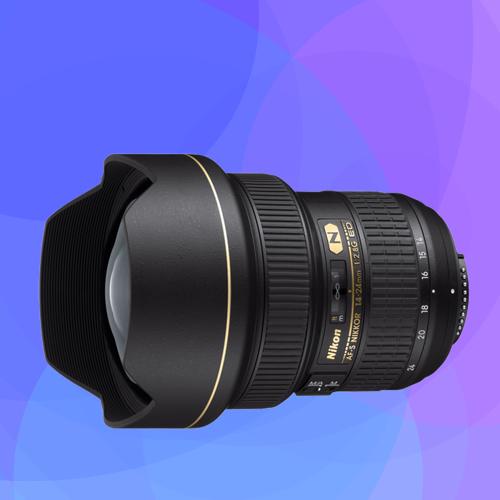
This lens is part of Nikon’s “holy trinity” of professional zoom lenses, along with the 24-70mm and 70-200mm. Its ultra-wide angle view makes it particularly suited for landscape, architectural, and interior photography.
Like its siblings, it offers a constant f/2.8 aperture for consistent performance across its zoom range. It’s also renowned for its exceptional sharpness and minimal distortion, even at the widest end.
See current price and more information on:
Pros:
- Ultra-wide view great for landscape, architectural and interior photography
- Fast f/2.8 constant aperture
- Exceptional sharpness and minimal distortion
Cons:
- Large and heavy
- No filter thread for screw-on filters
- Higher cost relative to other wide-angle lenses
Nikon AF-S NIKKOR 24-70mm f/2.8E ED VR
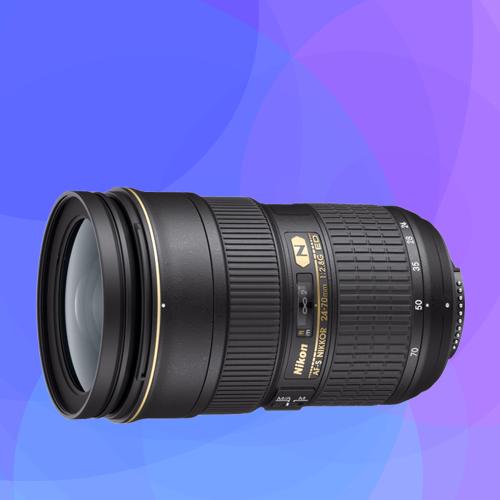
This versatile zoom lens is often considered a workhorse for many professional photographers. Its 24-70mm focal length makes it ideal for a wide variety of photography types, from landscapes and travel to portraits and events.
With its fast f/2.8 constant aperture, this lens performs admirably in low light and enables a shallow depth of field for that smooth bokeh effect. The lens also features Nikon’s Vibration Reduction technology, which helps to minimize camera shake for sharper images.
See current price and more information on:
Pros:
- Versatile zoom range suitable for various photography types
- Fast f/2.8 constant aperture beneficial in low light and for creating bokeh
- VR technology for minimizing camera shake
- Robust build and professional-grade image quality
Cons:
- Heavier and larger than some comparable lenses
- Relatively expensive
Nikon AF-S NIKKOR 70-200mm f/2.8E FL ED VR
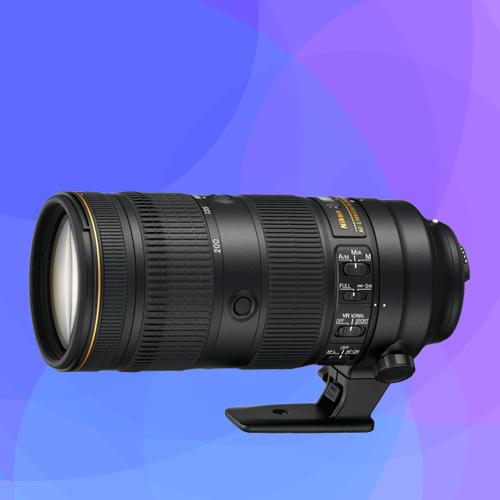
This lens is another staple in the camera bag of many professional photographers. It covers the 70-200mm focal length, a range that’s particularly useful for portraiture, event photography, and sports.
Like the 24-70mm, it also features a fast f/2.8 constant aperture and vibration reduction. Additionally, it has a fast, silent autofocus system and weather sealing to protect against dust and moisture.
See current price and more information on:
Pros:
- Great for portraits, events, and sports photography
- Fast f/2.8 constant aperture and VR for superior low light performance
- Fast, silent autofocus
- Weather-sealed for dust and moisture resistance
Cons:
- Heavier and larger, which may be challenging for handheld shooting over long periods
- High price tag
Nikon AF-S NIKKOR 50mm f/1.8G
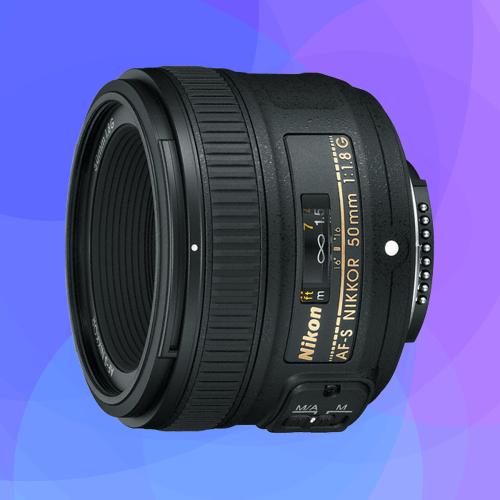
This compact prime lens is perfect for everyday photography, portraits, and street scenes. Its fast f/1.8 aperture delivers a beautiful bokeh, while allowing for excellent low-light performance.
See current price and more information on:
Pros:
- Compact and lightweight, ideal for travel
- Excellent image quality
- Wide aperture good for low light and creating bokeh
- Affordable price
Cons:
- No vibration reduction
- Autofocus can be slower compared to more advanced lenses
Nikon AF-S NIKKOR 85mm f/1.8G
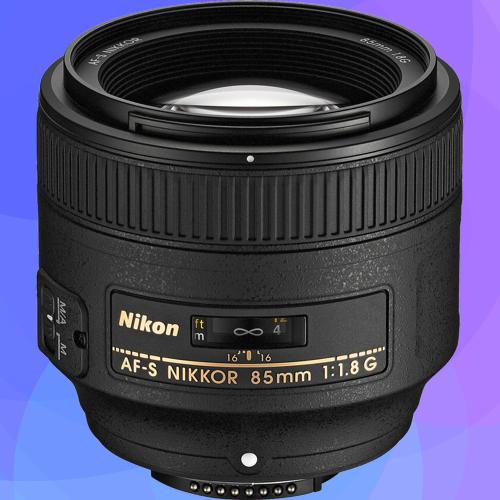
The Nikon AF-S NIKKOR 85mm f/1.8G lens is a medium-telephoto lens that excels in delivering stunning detail and depth in portrait photography. It provides exceptional clarity and the smooth, beautiful bokeh that photographers seek when shooting portraits. Its fast f/1.8 maximum aperture ensures excellent performance in low-light conditions and offers substantial control over depth of field.
Best Types of Photography for this Lens
The Nikon AF-S NIKKOR 85mm f/1.8G is particularly well-suited for:
-
Portrait Photography: The 85mm focal length, combined with a wide f/1.8 aperture, delivers beautifully smooth background blur (bokeh) and excellent subject isolation, making it a favorite among portrait photographers.
-
Event Photography: Its fast aperture and excellent low-light capabilities make it a suitable choice for indoor or low-light event photography such as weddings or concerts.
-
Street Photography: The lens can also serve well for street photography, offering a balance between subject detail and inclusion of some environmental context.
Specifications
The Nikon AF-S NIKKOR 85mm f/1.8G offers the following specifications:
- Focal Length: Fixed focal length of 85mm (equivalent to 127.5mm in DX format), providing a medium-telephoto perspective.
- Aperture: A fast maximum aperture of f/1.8 and a minimum aperture of f/16.
- Optical Design: The lens consists of 9 elements in 9 groups, including a Super Integrated Coating to reduce flare and ghosting and enhance color accuracy and contrast.
- Silent Wave Motor (SWM): The built-in SWM ensures fast, accurate, and quiet autofocus operation.
- Lens Construction: The lens features a robust design and comes with a rounded 7-blade diaphragm that produces a pleasing out-of-focus quality.
- Close Focus Distance: Its close focus distance is 0.8m/2.62ft.
See current price and more information on:
Pros
- Excellent for portrait photography with smooth and pleasing bokeh.
- Fast f/1.8 aperture provides outstanding low-light performance and control over depth of field.
- Silent Wave Motor (SWM) ensures quick and quiet autofocus.
- Sharp, high-quality images across the frame.
- Robust build and design, yet reasonably lightweight.
Cons
- Lacks Vibration Reduction (VR), which may result in some shake when shooting handheld at slower shutter speeds.
- Some chromatic aberration can be visible in high contrast situations.
- The lens is not weather-sealed.
- As a prime lens, it lacks the flexibility of a zoom lens, which may not suit all shooting scenarios.
Nikon AF-S NIKKOR 200-500mm f/5.6E ED VR
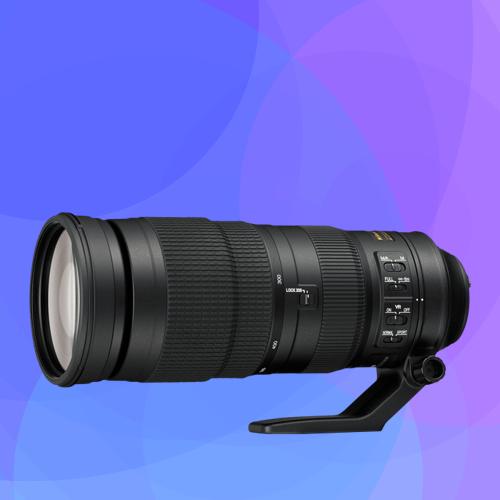
Another excellent option for wildlife and sports photographers, this lens offers a remarkable zoom range along with a constant f/5.6 aperture. Nikon’s vibration reduction is included to aid in capturing sharper images.
See current price and more information on:
Pros:
- Great zoom range ideal for wildlife and sports
- Constant f/5.6 aperture
- Includes vibration reduction
Cons:
- Bulky and heavy
- Lower light performance compared to lenses with larger apertures
Sigma 35mm f/1.4 DG HSM Art
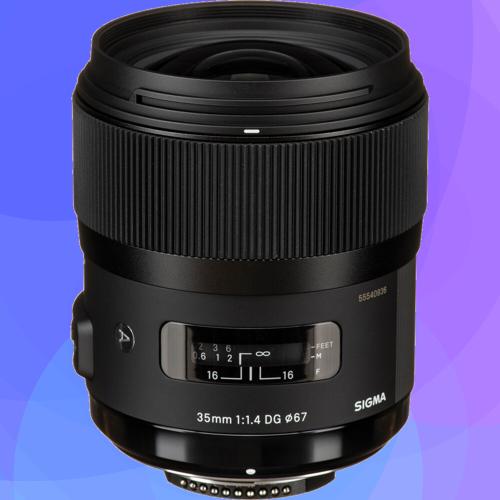
This lens is highly regarded for its sharpness and impressive aperture. At 35mm, it is an excellent choice for a wide variety of photography styles, including street, landscape, and event photography.
See current price and more information on:
Pros:
- Outstanding image quality
- Wide f/1.4 aperture for excellent low light performance and shallow depth of field
- Versatile for various types of photography
Cons:
- Larger and heavier compared to other prime lenses
- More expensive than comparable lenses
Tamron SP 90mm F/2.8 Di MACRO 1:1 VC USD
The Tamron SP 90mm F/2.8 Di MACRO 1:1 VC USD is an excellent lens known for its superb macro capabilities. With its 1:1 magnification ratio, it enables photographers to capture minute details at a close distance.
It is a fantastic option for those interested in macro photography—such as shooting insects, flowers, or small objects—but also performs well in portrait photography thanks to its 90mm focal length and wide f/2.8 aperture.
See current price and more information on:
Pros:
- Excellent image sharpness, even at the edges.
- Effective Vibration Compensation (VC) system for reducing camera shake.
- Fast and silent USD (Ultrasonic Silent Drive) autofocus.
- Moisture-resistant construction.
Cons:
- Not as robust as some other lens options.
- May struggle with autofocus in low-light conditions.
Nikon AF-S Micro NIKKOR 60mm f/2.8G ED
The Nikon AF-S Micro NIKKOR 60mm f/2.8G ED is a versatile lens that offers great macro capabilities. Its 60mm focal length also makes it a useful lens for portraits and other general photography situations.
The lens is good at delivering sharp and detailed images, and the f/2.8 maximum aperture allows for excellent performance in low-light conditions and depth-of-field control.
See current price and more information on:
Pros:
- Excellent optical quality with Extra-low Dispersion (ED) glass elements.
- Nano Crystal Coat reduces lens flare and ghosting.
- Silent Wave Motor (SWM) for fast and quiet autofocus.
- Compact and lightweight.
Cons:
- No vibration reduction.
- Autofocus might be a bit slow in some macro situations.
Tamron SP 24-70mm F/2.8 Di VC USD G2
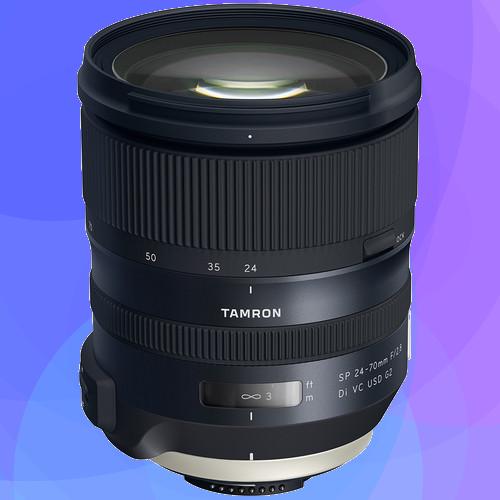
The Tamron SP 24-70mm F/2.8 Di VC USD G2 is a versatile and high-performance lens that delivers across the board. With a focal range from wide-angle to short telephoto, it’s perfect for a wide variety of photography genres, from landscapes and street photography to portraits.
It also features Vibration Compensation (VC), Tamron’s image stabilization technology, to help create sharp images even when shooting handheld. This lens is an excellent option for photographers who want a versatile, high-quality lens without breaking the bank.
See current price and more information on:
Pros:
- Versatile zoom range: Covers a wide array of shooting scenarios.
- Great image quality: Delivers sharp, vibrant images.
- Vibration Compensation: Ensures sharper handheld shots.
- Good value: Offers professional-grade performance at a more accessible price point than similar Nikon lenses.
Cons:
- Slightly heavier: The robust build comes with a bit of extra weight.
- Not as sharp at the edges: Some softness can be observed at the edges of the frame, especially at wider apertures.